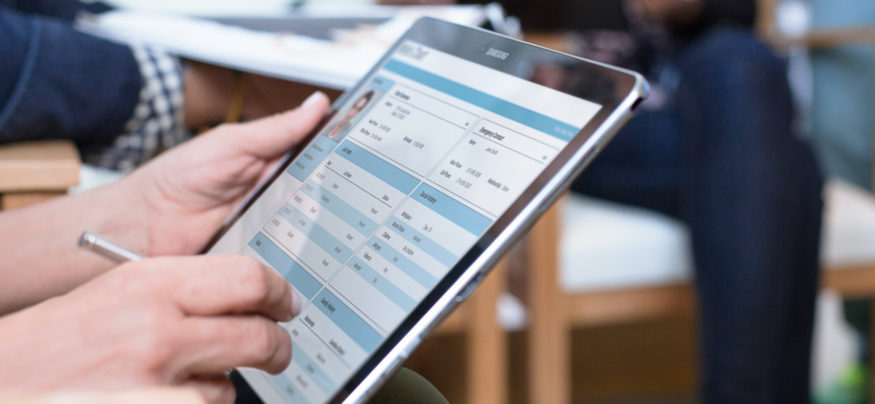Spending time in the hospital doesn’t have to be a scary or overwhelming experience. The more information patients receive, the more engaged and empowered they feel. This boosts patient satisfaction and leads to better health outcomes.
While patients certainly want face-to-face interaction with doctors and nurses, mobile technology can supplement these conversations with rich information and education. For example, the Epic MyChart Bedside application enables patients to access a medical center’s EHR system via hospital-provided tablets. Patients and their family members can view health records and test results, see daily treatment schedules, send messages to their care providers and receive disease management education. Depending on which tablet functionality a hospital chooses to unlock, patients can also use the devices to request additional hospital services and entertain themselves online.
For example, one well-respected hospital in the Midwest provides patients with 10-inch Samsung Galaxy tablets that come loaded with the MyChart Bedside application. The solution has led to higher HCAHPS scores, increased patient engagement and better patient care.
Communication: The Key to Patient Satisfaction
Nearly three-quarters of healthcare leaders believe that patient considerations — satisfaction, engagement and quality of care — will have the greatest impact on their organizations over the next two years, according to the 26th Annual HIMSS Leadership Survey. And 87 percent say patient satisfaction is currently the top priority for their organizations.
During the 2014 pilot at this hospital, the organization compared HCAHPS scores from test users to those from patients in the same unit without tablets. Hospital leaders expected communication-related measures — such as doctor/patient interactions and care team responsiveness — to be higher among tablet users. But they were surprised to find that every measure improved, including those which seemed unrelated to tablet use, such as room cleanliness and unit quietness.
The organization attributes this “halo effect” to the fact that patients and families appreciate the hospital’s efforts to meet their needs and deliver the information they want, which in turn makes everything about the patient experience seem better.
How does the medical center deliver what patients want? By asking them for feedback and using it.
For example, early tablet users wanted more information, more quickly. In the past, there was a delay before patients could view test results from the EHR system, so the patient experience team worked with providers and determined it was OK for patients to see results sooner. Based on patient feedback, they’ve also added more disease-management education into the application — including PDFs, videos and audio files — and added more information about patients’ doctors and care teams.
Engaged Patients Are Healthier Patients
Meaningful face-to-face interactions set the stage for patient engagement, but technology helps to fill the gaps and reinforce patient education. For example, many patients can become overwhelmed by the amount of information they receive during conversations with their care teams. This technology enables patients to go back and review information at their own pace and to share it with concerned family members.
Mobile technology also enables the medical center to tailor patient education based on each user’s preferred learning style. For example, younger patients who don’t want to read pages and pages of disease-management content can watch educational videos instead. Meanwhile, patients with vision problems, or who are simply auditory learners, can listen to content via MP3 files.
The more engaged patients become in their own healthcare, the better their patient experience becomes. Just as importantly, they have the tools and information they need to manage their diseases when they get back home, which leads to better health outcomes and decreases their chances of ending up back in the hospital.
Learn more about Samsung’s solutions for enhancing patient engagement and satisfaction.








